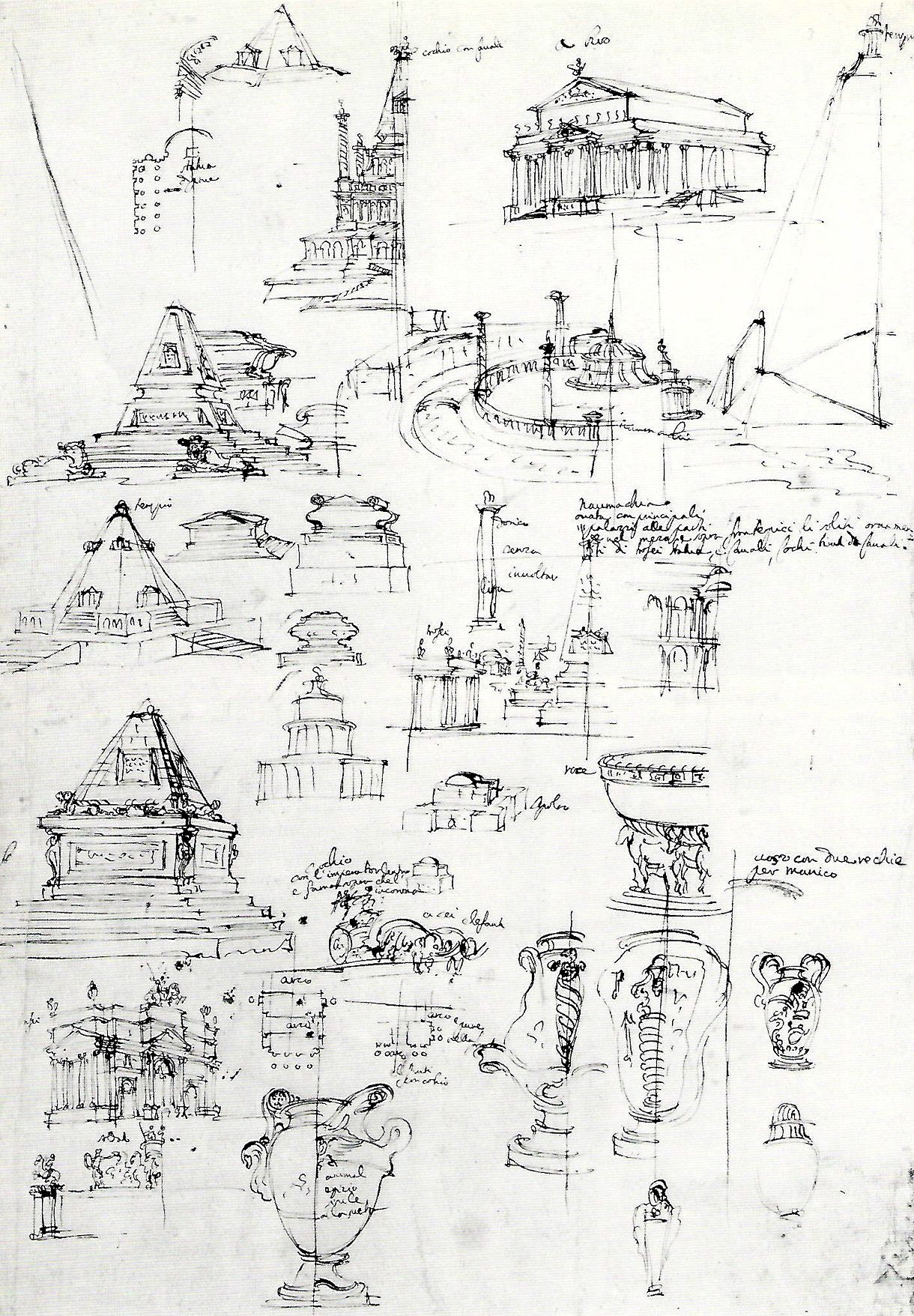...the inspiration behind the scope of Piranesi's imagination is hard to attribute to any preceding esseys at imaginative reconstructions in Italy. An important key to the problem, however, is suggested in two surviving pages of sketches made by Piranesi from Fischer vov Erlach's Entwurf einer historischen Architektur of 1725.
John Wilton-Ely, The Mind and Art of Giovanni Battista Piranesi (London: 1978), p. 15.
The visionary tradition, meanwhile, persisted as an invaluable instrument of archaeological enquiry in the works of G. B. Montano and Athanasius Kircher, continuing into Piranesi's youth with the reconstructions of Fischer von Erlach and Francesco Bianchini. In turn, the stimulus of Fischer's methods in particular conditioned Piranesi's earliest fantasies in the Prima Parte, where he was to acknowledge that the 'speaking ruins have filled my spirit with images that accurate drawings could never have succeeded in conveying'. Some seven years later, the mature realization of this development in Piranesi's work was achieved in the supplementary plates of the Opere Varie, notably in the Great harbour and in the plan of the College.
John Wilton-Ely, The Mind and Art of Giovanni Battista Piranesi (London: 1978), p. 45.
| |

Page of sketches made by Piranesi from Fischer von Erlach's Entwurf einer historischen Architektur, 1721 (Pierpont Morgan Library, New York).
|
